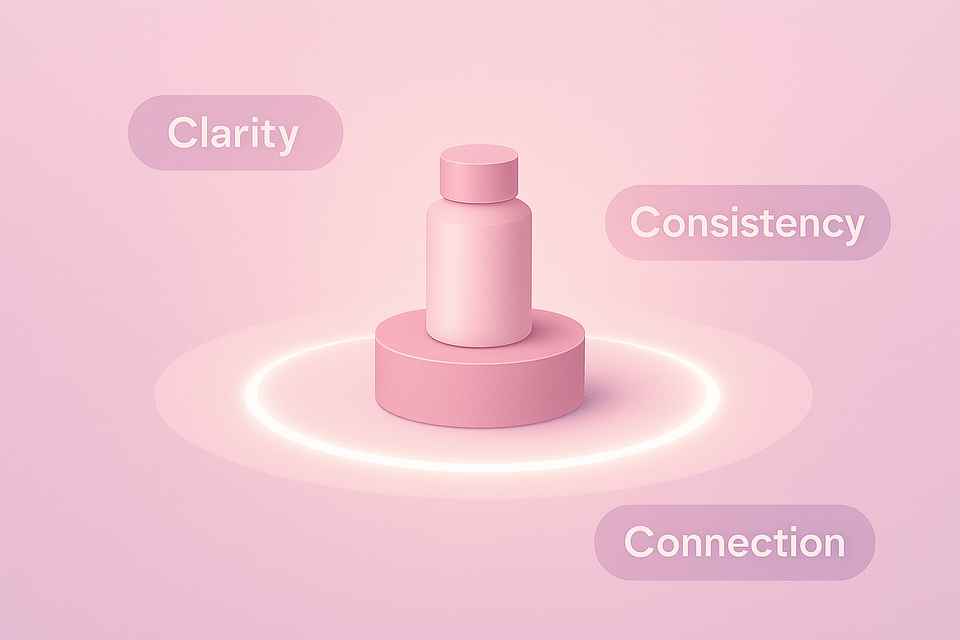Why Brand Isn’t a Luxury on Amazon — It’s a Moat

There was a time when selling on Amazon felt like the Wild West.
A clever title, some decent reviews, and a rock-bottom price could launch an unknown product to page one.
Branding? Optional.
But that era is gone — and what’s replaced it is far less forgiving.
Today, brand isn’t just a nice-to-have. It’s your only moat.
The Death of Generic
What used to be a price-and-performance battleground is now a saturated, pay-to-play ecosystem where differentiation is no longer optional — it's essential.
Today’s shoppers are no longer swayed by five-star reviews alone. They’ve seen it all — the carbon-copy listings, the endless scroll of lookalike products, the AI-generated titles. That sameness often breeds distrust.
Shoppers are looking for cues:
- Who is this brand?
- Why should I trust them?
- What makes them different?
The brands that win don’t just sell products. They signal meaning in milliseconds.
- Their images communicate values — eco-conscious packaging, diverse models, real-world use cases.
Think of a supplement brand that uses real lifestyle imagery instead of generic flat lays — that’s a visual cue that builds trust.
- Their bullet points reflect clarity and purpose.
- Their tone isn’t transactional — it’s personal, thoughtful, and consistent.
And that shows up in the data: higher click-through rates, stronger conversion, better post-purchase engagement, and even increased organic visibility.
So if sameness is the problem, brand is the pattern interrupt. But what does that actually look like on Amazon?
What Brand Actually Means on Amazon
In the DTC world, "brand" often evokes lush visual storytelling and curated lifestyle content. On Amazon, the toolkit is different — and more constrained — but no less powerful.
Here, your brand is built through:
- Detail pages that feel human, not templated
- Product names and variations that show intention
- Image sequences that guide, not just decorate
- A storefront that mirrors your customer’s journey
- Consistent messaging across your portfolio
Most importantly, it’s built through repetition and relevance. Are you solving a problem in a way that feels authentic and differentiated? Are you making it easier for a customer to say “yes” — not just with facts, but with feel?
What I’ve Seen Behind the Curtain
Having worked with brands across categories — from baby to electronics, floor care to fitness — I’ve seen one clear pattern: the brands that treat Amazon like a brand-building channel, not just a sales outlet, are the ones that build staying power.
They don’t wait until they’ve "made it" to start building brand equity. They build it from the beginning — slowly, deliberately, and with their customer in mind.
They understand that brand isn’t a top-of-funnel exercise or a post-funding luxury. It’s what makes every click more efficient, every ad dollar work harder, and every new product launch easier to lift.
"They build brand from day one — not as an afterthought, but as their strategy."
The Moat Mentality
In an environment where performance marketing is expensive and short-term wins are quickly eroded by copycats, brand is the only lever that compounds over time.
You can’t out-bid everyone forever. But if customers remember you, trust you, and come back for more — you’ve built something defensible.
Your brand becomes your moat.
Not your PPC budget. Not your price point. Not your review count.
Your brand. That’s the edge that lasts — and on Amazon, it might be the only one that does.
The Amazon Brand Moat Framework
Clarity – Positioning, naming, and relevance
Consistency – Across listings, variations, and tone
Connection – Messaging, values, and visual cues
Sure, Amazon isn’t built for lush storytelling. Its templates are rigid, and tools limited. But that constraint? It forces clarity. And clarity builds trust.
These aren’t just best practices — they’re your brand’s most defensible assets in a sea of sameness.
The Brand Utopia Bottom Line
Brand isn’t a luxury. It’s the only long-term edge that can’t be copied, undercut, or outbid. On Amazon, where performance is often fleeting, brand is what sticks.
The sellers who win tomorrow are already building trust today — one page, one message, one customer connection at a time.
Your moat starts now. Build it deliberately.
